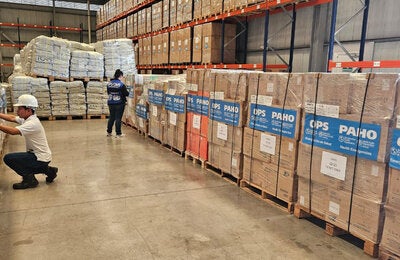
Washington DC, February 22, 2021 (PAHO)- The Pan American Health Organization (PAHO) conducted a theoretical simulation exercise to support countries in reviewing and updating their national plans to roll out COVID-19 vaccines in Central America. The initiative sought to provide timely information on regulatory development and approval, logistics, and surveillance to ensure equitable and timely access to vaccines. Forty-two delegates from Costa Rica, El Salvador, Guatemala, Honduras, Panama, and the Dominican Republic participated.
Key areas for a successful vaccine roll out include the development of national vaccination plans, establishment of expedited regulatory processes, preparation of health workers, and strengthening of cold chain capacity.
During the opening of the event, Analía Porras, Chief of the Medicines and Health Technologies Unit at PAHO, highlighted that “PAHO will continue to support the countries to ensure programmatic and operational readiness for the delivery and administration of COVID-19 vaccines”.
The exercise is designed for countries to participate in three simultaneous simulation groups on batch authorization and release, vaccine distribution logistics, and subsequent surveillance.
During the conference, a work plan was developed with each country, and with the Central American subregion, to reduce existing regulatory gaps that may affect expedited access to vaccines, ensuring their quality, safety, and efficacy.
At the end of the exercise, the Coordinator of the Central American Mechanism, Leonardo Sánchez, thanked the opportunity to review the procedures and logistics of COVID-19 vaccines, which have been prepared by the countries with PAHO technical collaboration.
PAHO has provided technical assistance to help countries prepare for vaccine deployment. It also has assisted countries in monitoring safety data; with logistics to coordinate delivery of doses and their monitoring; with recruiting and training staff so health personnel know how to deliver vaccines; and with public information campaigns to ensure people know where, when, and why to receive their doses.



